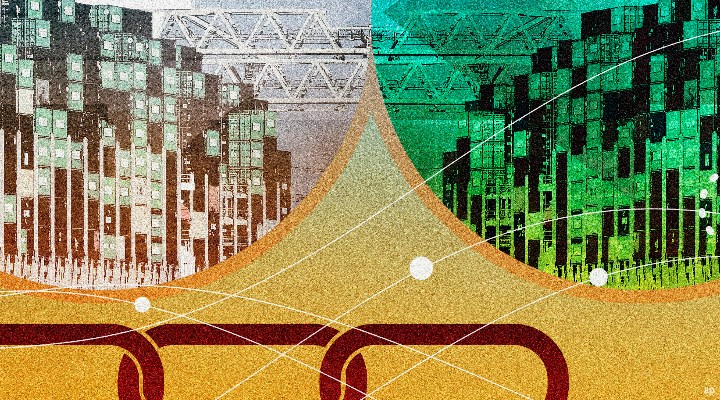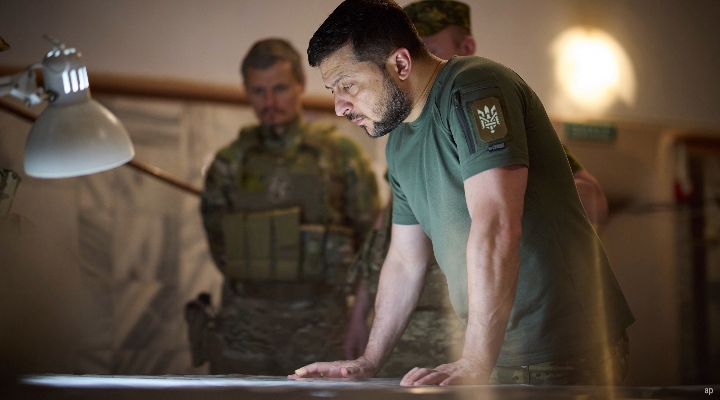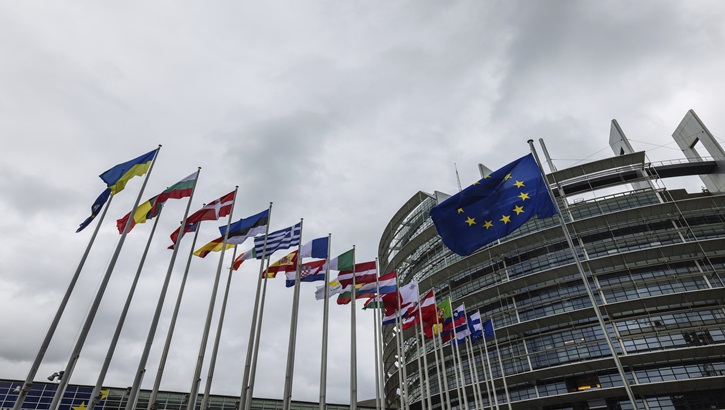The European Central Bank raised interest rates for the first time since 2011 in its July 21 meeting, after halting net bond purchases in June. Still, the ECB's hands are tied when it comes to more restrictive measures given the economic downturn and diverging spreads on government bonds in the individual member states.
But not everyone agrees. Goldman Sachs, for example, recently warned not to underestimate the firepower of the ECB. According to estimates by Goldman analysts, the EUR/USD could fall by a further 5% if the extreme scenario of a complete halt to the supply of Russian natural gas to Europe occurs. Then, the central bankers will react vigorously against this devaluation, Goldman Sachs expects.
Fuelled by the war in Ukraine and the resulting explosion in the cost of energy and food, prices are also rising rapidly in Europe. For the eurozone, inflation for June came in at 8.6%, compared to 8.1% in May. Even with its deposit facility rate now at zero, the ECB has been reacting more slowly to inflation than its US and other European counterparts.
Natural Gas: A Pipeline Takes Centre Stage
Europe, and especially Germany, is increasingly growing nervous about whether Russia’s Gazprom will turn off the gas taps again even after the 10-day scheduled maintenance of the Nord Stream 1 pipeline ended and flows resumed at a lower rate. In Berlin, all eyes are on Lubmin on the Baltic coast, where the pipeline ends and gas flows enter the German grid.
Other European countries are also reporting a decline in Russian gas volumes. In previous years, Gazprom provided other countries with higher supplies during Nord Stream maintenance, via alternative pipelines.
Not this year. According to Reuters, Austria's OMV (OMV) has only received around 30% of the nominated volumes since Nord Stream maintenance began. And Italy’s ENI also had to cope with a drop in delivery volumes by almost a third - which is also related to the loss of Nord Stream volumes, which would otherwise be forwarded south.
However, one problem has been resolved recently. Canada has approved Siemens Energy to ship and install a serviced gas turbine and compressor at the Russian end of the Nord Stream pipeline. This originally fell under Canadian sanctions against Russia, but Ottawa recently approved the move as an exception. According to Gazprom, the missing parts were the reason for the previous gas flow throttling in Nord Stream 1.
Unpredictable Situation
Germany’s economics minister Robert Habeck fears substantial damage to the German economy and the country’s utilities chief Klaus Müller called the situation “unpredictable”. BASF, for example, said in an earlier email to Morningstar that it could continue to operate at a reduced load provided gas volumes did not fall below 50% of its maximum gas demand.
Estimates on how severely the German and European economies would be impacted by a permanent halt in Russian gas flows vary considerably. Economists at Deka estimate that in the event of a complete stop of deliveries, German GDP would shrink by 4.2% in 2023. This is in the same order of magnitude as during the Coronavirus lockdowns of 2020.
Deutsche Bank is even more pessimistic. In the event of gas rationing, the bank assumes a GDP slump of between 5-6%. But even if the gas shock is not quite as severe, a recession is likely in the second half of the year, it says. After expanding by 1¼% in 2022, German GDP is then likely to shrink by around 1% in 2023, largely because consumers are unable to offset the loss in real income by further dissaving.
The EU Commission has also adjusted its expectations in its summer forecast on the back of the energy crisis. Brussel now expects a GDP growth of 2.6% for the EU27 this year, compared to 2.7% in the spring forecast. In 2023, there will be a meager plus of 1.4% instead of the 2.3% that it forecasted in May.
There is now a "significant risk" that Russia will stop gas deliveries to Europe this year, Brussels says. The Commission therefore works on an emergency plan for the likely deterioration of gas availability this winter, several media report. According to the draft paper, consumers and industry could face significant energy saving measures. For instance, public buildings, offices and commercial buildings should be heated to a maximum of 19 degrees from autumn.
Bearish Markets
Stock markets have fallen significantly since the beginning of the year, but Europe is in a worse position than the USA, as the chart above shows. While the US market – measured in euros – has fallen by around 11 percentage points since the beginning of the year, the European market has collapsed by almost 19 percentage points.
Dollar Strengthens
For the first time in almost 20 years, the euro fell to par with the US dollar. After strong US jobs numbers, the market priced in a widening interest rate differential between the US and the eurozone.
While the ECB put interest rates rates up by 50 basis points on July 21, markets are expecting a 75 basis point rise from the Federal Reserve on July 27. This is the first interest rate rise in the eurozone in this tightening cycle, but the Bank of England and Fed have already started raising rates.
But it's not just the euro that's falling: the dollar hit a 24-year high against the yen this month. And the US dollar index (which measures the value of the greenback against a basket of six foreign currencies) returned to its highest level since October.
The euro has experienced a dramatic fall in value since the beginning of February. The decline accelerated in recent weeks amid fears that Russia would shut off gas supplies entirely in retaliation for Western sanctions.




























